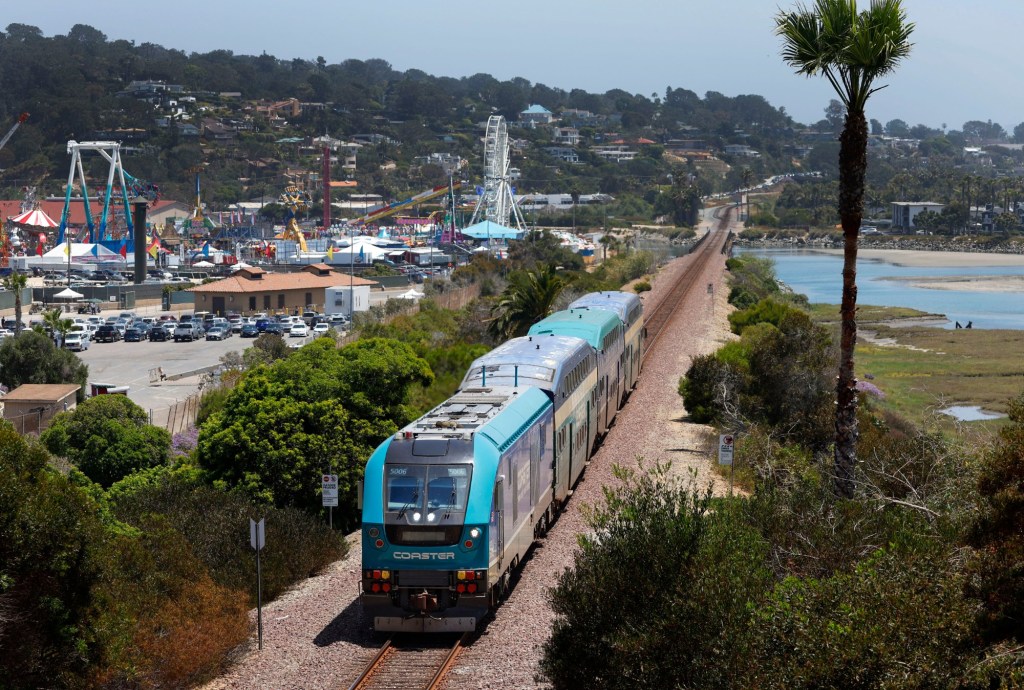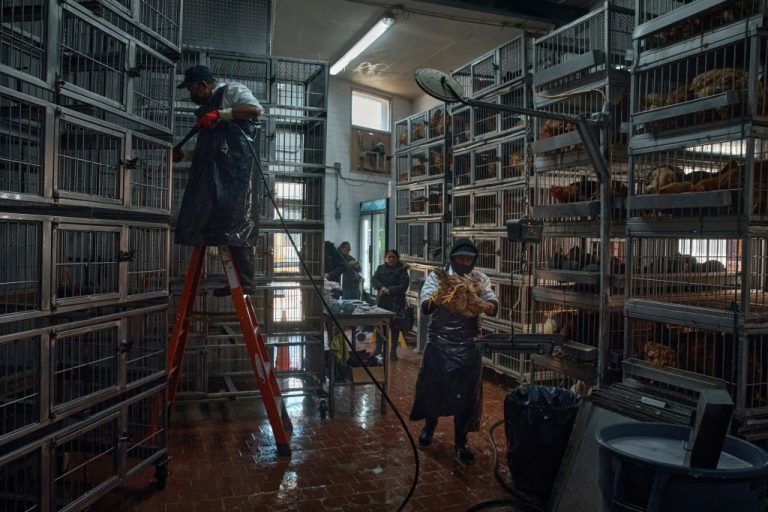

Possible routes being considered for a Del Mar train tunnel have been expanded from the three proposed last summer to 16 potential alignments in a “value analysis study” report released Friday by the San Diego Association of Governments.
Many of the routes have been discussed for years, and the number of possibilities has fluctuated up and down along with public feedback on the project. SANDAG said there were five choices in 2017, and then publicized a “spaghetti map” of about a dozen possibilities in 2023.
Included in Friday’s report are new details on many ideas discussed over the years.
One is a closer look at a proposal to reroute 25 miles of the coastal rail corridor along Interstate 5 from Oceanside to Sorrento Valley at estimated construction costs up to $45 billion. Another possibility is moving all freight traffic to a new 75-mile route along Interstate 15, which could cost up to $158 billion.
Both those ideas were previously dismissed for a number of reasons, including the astronomical cost of construction. So far, there’s no money available for construction, and the chances for federal dollars don’t look good under the current administration. Still, a groundbreaking is probably at least a decade away, and things could change.
“These are very high-level concepts,” said Maria Rodriguez Molina, SANDAG’s director of mega projects, border, and goods movement.
All of the proposed routes are subject to change, she said. Even when a final preferred alignment is selected by the board, there are likely to be additional refinements as the project proceeds.
The results of the value analysis report will be presented to the SANDAG board of directors at its Feb. 28 meeting, where the agency’s staff will recommend the top three or four alignments. Those selections are still to be made and should be available in a staff report issued Feb. 21, agency officials said.
Public comments on the report and the proposed alignments will be heard at the Feb. 28 meeting, agency officials said.
SANDAG launched the value analysis study soon after it received more than 1,500 public comments on the notice of preparation issued in June 2024 for the project’s environmental impact report.
“The idea is to get technical people in a room and talk about how you can increase the value of a project,” said Keith Greer, SANDAG’s deputy director of environmental compliance and climate.
The three routes in the notice of preparation probably remain the most likely possibilities. One is along Camino Del Mar through Del Mar, another through Del Mar’s Crest Canyon, and a third under the fairgrounds and along I-5.
Construction costs for those routes ranged from about $5 billion for Camino Del Mar or Crest Canyon or up to $9 billion for the fairgrounds. However, each proposed alignment was staunchly opposed by many Del Mar and Solana Beach residents and fairgrounds officials, depending largely on who lived or worked closest to which route.
Residents raised issues including noise, vibrations, the transportation of hazardous materials, and the likely long-term effects on street traffic, local businesses and property values.
Transit officials say it is essential to move the tracks off about 1.7 miles of steep, eroding coastal bluffs, which recede at an average rate of 6 inches annually.
SANDAG has spent tens of millions of dollars since the turn of the century to repair landslides and stabilize the bluff-top tracks. Those efforts continue, but the space sandwiched between expensive, ocean-view homes and the beach continues to shrink.
The coastal rail route is part of the 351-mile Los Angeles-San Diego-San Luis Obispo rail corridor and is San Diego’s only railroad link to Los Angeles and the rest of the United States. The San Diego segment carries Coaster commuter trains, Amtrak and BNSF freight, and is part of the Defense Department’s Strategic Rail Corridor Network.
A tunnel is the only practical alternative to the Del Mar bluffs because the city’s hills are too steep for a train to climb, SANDAG planners have said.
Some of the 16 alternatives in the value analysis study are variations on the three in last summer’s notice of preparation, but with minor changes such as a different location for the tunnel’s entries or portals.
SANDAG plans to double-track the entire 60-mile corridor from downtown San Diego to Orange County, and about 75 percent of that has been completed so far. Double-tracking will improve train service and reliability to better serve the region’s growing population.
Del Mar is one of the remaining single-track bottlenecks, and any of the proposed alternatives would include two sets of tracks to replace the one.
Most Del Mar residents agree that the tracks need to be moved, but they literally do not want the railroad in their backyard.
Included in the array of options is one to keep the alignment where it is on the bluffs, but widen it to include a second set of tracks. Those improvements could be made within the railroad’s existing right-of-way, although the rear of some residential properties have encroached on the right-of-way and would be affected.
Widening the tracks on the bluffs is one of the least costly alternatives, estimated at up to $2.5 billion.
However, like every alternative, leaving the tracks where they are includes significant downsides. Among them are the increased use of seawalls and retaining walls, the taking of residential backyard properties, and the continued threat of coastal erosion.






